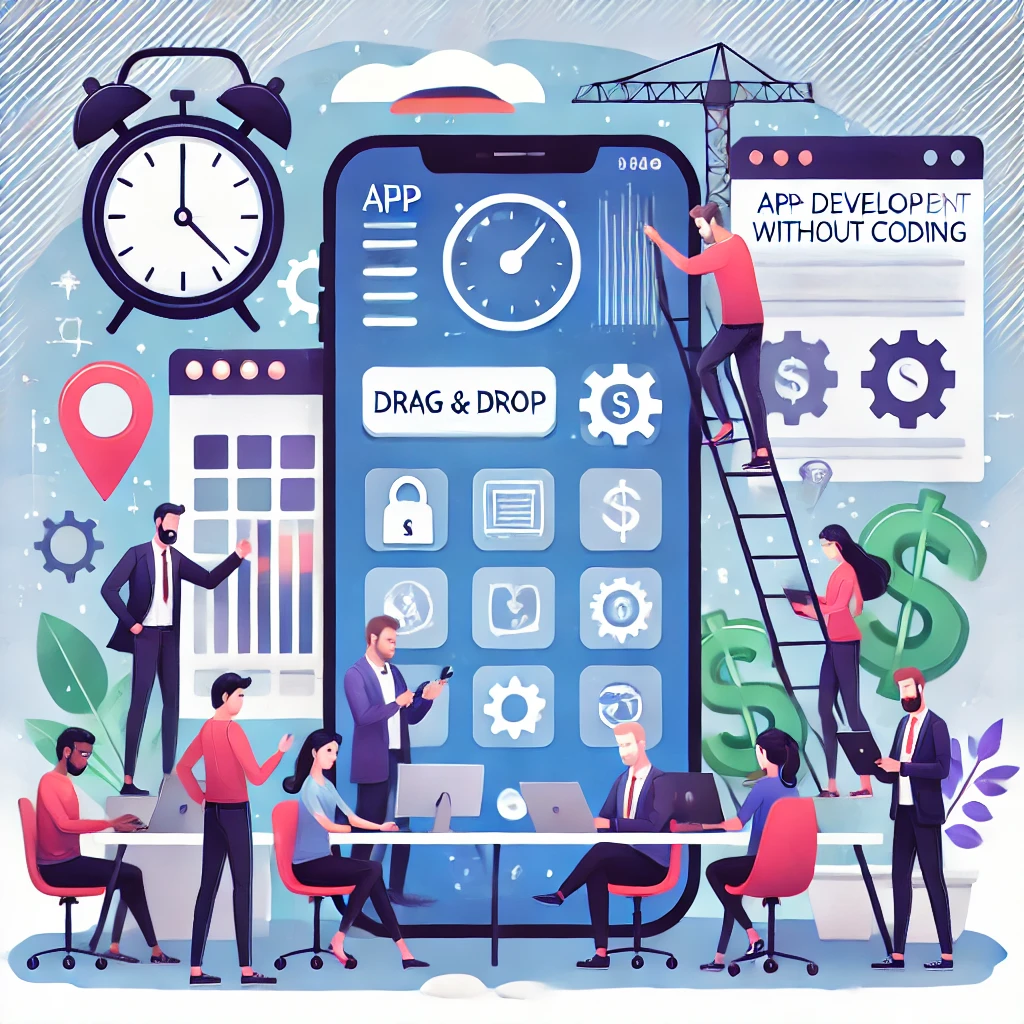It was something only complex coders did. Today, no-code and low code platforms allow anyone to create software without deep tech skills. Entrepreneurs, professionals, and creatives can easily turn their ideas into reality using these tools.

Let’s explore no-code and low-code platforms, along with their benefits, and how to create apps without coding.
What are no code and low code platforms?
No code tools
No code platforms allow users to develop applications with the use of intuitive interfaces, drag-and-drop tools, and templates, and hence they don’t require any coding knowledge. This is ideal for people who focus more on functionality and design rather than technical coding. Examples include Bubble, Wix, and Airtable.
Low code Platforms
Low code platforms are like no-code ones except that they are for people who know some technical skills and want to speed the development process. They combine drag-and-drop capabilities with code adjustments. Examples are OutSystems, Mendix, and Appian.
Why No Code and Low Code Platforms?
Rate of growth
With traditional app development, it may take weeks or months. However, no-code and low-code platforms enable creating and launching the application within a couple of days or even hours.
Cost-Effectiveness
Hiring developers or outsourcing app development is expensive. Such platforms reduce budget requirements and make the process of creating an app easy for startups, small companies, and individuals.
Access
These tools require technical know-how, but indeed the businesspeople, marketers, and entrepreneurs can design solutions suited precisely to their practices and businesses.
Flexibility and Development
Many platforms are designed to develop your app into the next big hit. Whatever your needs, you can find a suitable package-be it basic or advanced options-to help grow your application.
It will get on a No Code and Low Code Platform
1. Identify Your Goal
First of all, determined what to do with your application. Ask yourself:
What problem does this app solve?
Who is my audience?
What essential features exist?
A clear vision will guide your platform and tool selections.
2. Select the Right Platform
Different refers to different purposes. Some common examples are given below:
Bubble: perfect for web-app development with effects.
Glide: for developing mobile apps based on Google Sheet data.
Zapier: The Best for workflow automation, integration app.
Airtable: Combines spreadsheets and databases to build lightweight apps.
Compare platforms by your app’s complexity, types of features required, and budget.
3. Κaptured Understanding
Knowledge of the tools and features of these platforms is necessary, though coding isn’t excessively laborious. Most sites offer tutorials, documents, and forums to get you started.
4. Build Your App
It would support drag-and-drop facilities regarding layouts, forms, buttons, and so on. The user experience should be intuitive and beautiful.
5. New Features
Features on no code platforms include the feature for form submission, data collection, and even service integrations.
Low code platforms help one create unique applications through small bits of code or applications programming interfaces.
6. Test Your App
Testing is the last and most important step to ensure that your app works well. Check:
User-friendliness: Is the software user-friendly?
Functionality: Does the application do what it promises?
Performance: Loads quickly and fairly manages data.
7. Beginning and Ending
Publish your app once satisfied. Many platforms manage hosting and deployment. Gather feedback and improve over time.
To overcome obstacles
Learning Curve
No code and low code platforms are easier than traditional coding, but one needs to learn. Start with easy projects before advancing to the feature-rich ones. Customization Limitations Low code or hybrid solution will come into the picture when flexibility for certain features is required on no-code platforms. Integration Issues Some have restricted integration. No code and low code platforms’ applications:. Prototyping Quickly create prototypes to test ideas or present to stakeholders. Business Automation Automate repetitive tasks: data entry, sending emails, or onboarding Work in e-commerce platforms Sell through virtual stores on Shopify, Squarespace, etc.
In-House Tools: Create dashboards or inventory systems or project management tools. Develop an Event or Community App on either Thunkable or Adalo.
Conclusion No code and low code platforms are revolutionizing the way applications are developed, making it possible for everyone to quickly create affordable solutions without requiring any technical skills. This basically means endless opportunities for business ideas and workflow streamlining and solving problems. With the right platform and a willingness to learn, you can turn your app ideas into reality without coding. Start exploring today and join the movement of everyday people shaping app development.
Have you used a no-code or low-code platform?
Share what you experienced or your tips in the comments!
